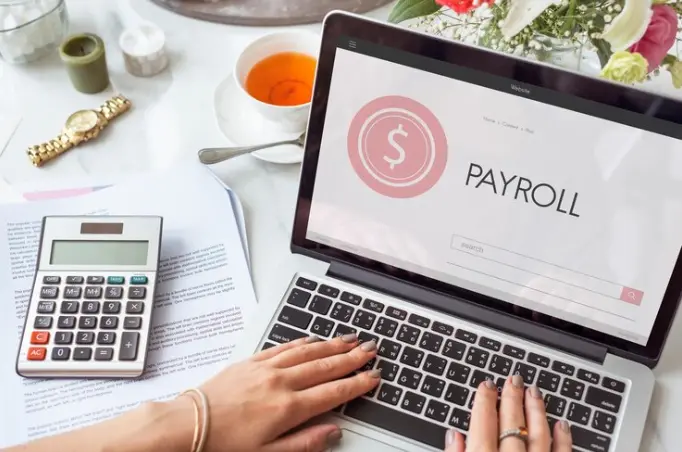The startup world is often likened to a high-stakes poker game, where entrepreneurs are all-in with their innovations, investors are hedging their bets with millions, and market trends can shift the odds in unexpected ways. In this context, a 50M Series 1B 191Mroofbloomberg A round and a subsequent $1 billion valuation for a company operating in a $191 million market might seem like a daring gamble. Yet, this scenario has become increasingly common, reflecting the complex dynamics of modern venture capital and the high expectations placed on disruptive technologies.
The Anatomy of a Series A Round
Before diving into the specifics, it’s essential to understand the mechanics of a 50M Series 1B 191Mroofbloomberg A funding round. This initial stage of venture capital financing typically follows a company’s seed round and is designed to help a startup scale its operations, develop its product, and expand its market reach. The funds raised during this round are crucial for establishing a company’s presence in its industry, often marking the transition from a promising idea to a market-ready product or service.
In a typical Series A round, investors exchange capital for equity in the company. These investors, often venture capital firms, are looking for startups with a strong business model, a clear path to profitability, and a unique value proposition that can disrupt an existing market. The amount raised can vary widely depending on the industry, the startup’s potential, and the competitive landscape. However, raising $50 million in a Series A round is a significant milestone, indicating strong investor confidence in the startup’s vision and execution capabilities.
The Significance of a $1 Billion Valuation
A $1 billion valuation, often referred to as “unicorn” status, is a significant benchmark in the startup ecosystem. It symbolizes that a company has reached a level of success and potential that sets it apart from its peers. However, achieving this valuation during a 50M Series 1B 191Mroofbloomberg A round is particularly noteworthy. It suggests that investors believe the company has the potential to dominate its market, scale rapidly, and eventually generate substantial returns.
This high valuation can be attributed to several factors:
- Disruptive Potential: The startup’s product or service likely addresses a significant pain point in the market, offering a solution that could change the industry’s landscape. This disruptive potential makes the company highly attractive to investors who are looking for the next big thing.
- Scalability: Investors may see a clear path for the startup to scale its operations globally, capturing a large market share and increasing its revenue exponentially. Scalability is a critical factor in achieving a high valuation.
- Experienced Leadership: The company’s leadership team likely has a proven track record of success, which instills confidence in investors. Experienced entrepreneurs who have successfully navigated the startup world before are often seen as safer bets.
- Favorable Market Conditions: The overall market conditions, including the availability of capital and investor sentiment, can also play a role in the valuation. In a bullish market, investors are more willing to bet on high-growth startups, leading to higher valuations.
The $191 Million Market Conundrum
The juxtaposition of a $1 billion valuation in a $191 million market raises important questions about the sustainability and logic behind such a significant investment. How can a company be valued at five times the total size of its market? To understand this, one must delve into the nuances of market size, market potential, and investor psychology.
- Market Expansion: The 50M Series 1B 191Mroofbloomberg market size likely represents the current state of the industry, but investors are betting on its future expansion. They may believe that the startup’s innovation will unlock new market opportunities, increase demand, and ultimately grow the market far beyond its current size.
- Adjacent Markets: The company might be operating in multiple markets or have the potential to enter adjacent markets. While the primary market is valued at $191 million, the total addressable market (TAM) could be significantly larger if the company can expand its offerings.
- Monopoly Potential: Investors may see the startup as having the potential to dominate its market entirely, capturing the majority of the market share. If the company can establish itself as a monopoly or near-monopoly, it could justify the high valuation despite the market’s current size.
- Strategic Acquisitions: Another possibility is that the startup could engage in strategic acquisitions to increase its market share and revenue. By acquiring competitors or complementary businesses, the company could rapidly grow its footprint, justifying the high valuation.
- Long-Term Vision: Investors often take a long-term view, looking beyond the immediate market conditions. They may believe that the startup’s technology or business model will eventually revolutionize the industry, leading to exponential growth in the market size over time.
The Role of Investor Sentiment
Investor sentiment plays a crucial role in determining valuations, especially in the early stages of a company’s development. When investors are optimistic about a startup’s potential, they are more likely to assign higher valuations, even if the current market size doesn’t fully support it. This sentiment can be influenced by several factors:
- Fear of Missing Out (FOMO): In a competitive venture capital environment, investors don’t want to miss out on the next big thing. If a startup is generating buzz and attracting high-profile investors, others may rush to invest, driving up the valuation.
- Market Trends: Certain industries, such as technology, biotech, and fintech, are particularly hotbeds for high valuations. If the startup operates in a trending sector, investors may be more willing to pay a premium to secure a stake in the company.
- Successful Precedents: If similar startups have achieved high valuations or successful exits in the past, investors may use these precedents to justify a higher valuation for the current startup. This is especially true if the startup is seen as having the potential to replicate or surpass the success of its predecessors.
- Visionary Founders: Charismatic and visionary founders who can articulate a compelling narrative about the future of their industry can inspire investor confidence, leading to higher valuations. Investors are often willing to bet on founders who have a clear and ambitious vision, even if the current market doesn’t fully support it.
The Risks and Rewards of High Valuations
While a 50M Series 1B 191Mroofbloomberg market can be exciting, it also comes with significant risks. High valuations place immense pressure on startups to deliver exceptional results and achieve rapid growth. If the company fails to meet investor expectations, it could face a steep decline in valuation, making it difficult to raise future rounds of funding.
- Market Saturation: If the market doesn’t expand as expected or if competitors enter the space, the startup could struggle to achieve the growth necessary to justify its valuation. Market saturation can limit the company’s ability to scale, leading to slower revenue growth and disappointing returns for investors.
- Overvaluation: There’s a risk that the company is overvalued, with investors paying too much for equity based on unrealistic growth projections. If the startup fails to live up to these projections, it could face a down round in the future, where it raises capital at a lower valuation than before, diluting the value of existing shares.
- Burn Rate: Startups with high valuations often have high burn rates, as they need to invest heavily in growth initiatives, talent acquisition, and product development. If the company runs out of cash before achieving profitability, it may struggle to secure additional funding, leading to financial difficulties.
- Investor Expectations: High valuations come with high expectations. Investors will demand significant returns on their investment, putting pressure on the startup’s leadership to deliver. This can lead to aggressive business strategies, which may not always be sustainable in the long term.
Conclusion
In the dynamic world of startups and venture capital, a 50M Series 1B 191Mroofbloomberg market reflects the intersection of ambition, innovation, and investor confidence. While such valuations can be a testament to the disruptive potential of a startup, they also require a careful balance between ambition and reality.














